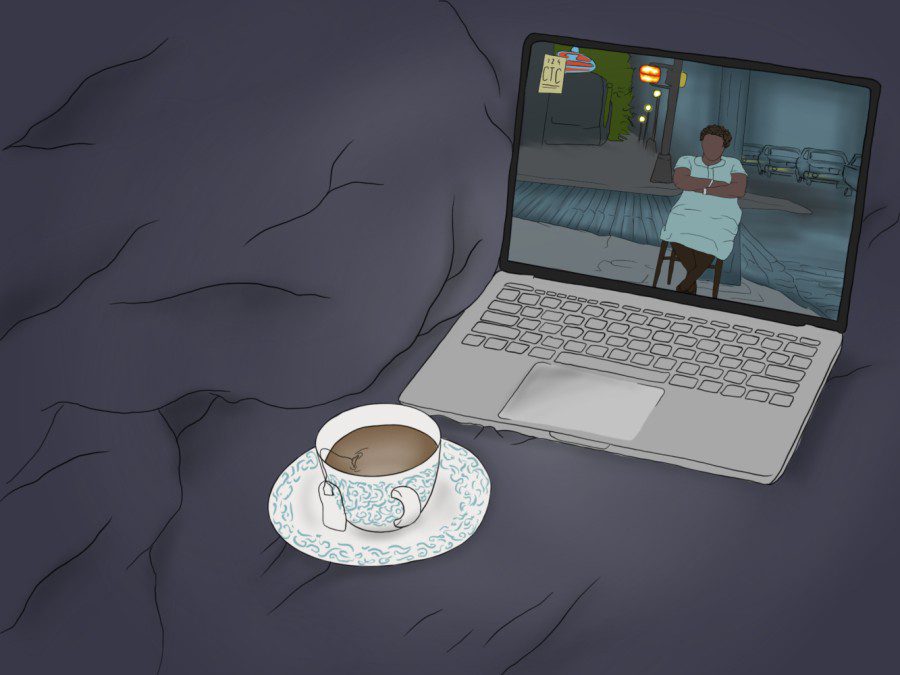Off the Radar: ‘News from Home’ captures urban solitude and fleeting memories
Off the Radar is a weekly column surveying overlooked films available to students for free via NYU’s streaming partnerships. “News from Home” is available to stream on Kanopy.
“News from Home,” a 1977 documentary by Chantal Akerman, explores her life in New York City. The film is available on Kanopy. (Illustration by Aaliya Luthra)
November 11, 2022
New York City is no stranger to the silver screen. Time and time again, it has set the stage for gritty crime dramas, sappy rom-coms and billion-dollar superhero blockbusters. Audiences from across the globe immediately associate the city with the grandeur and spectacle of cinema.
However, the camera lens selectively distorts outsider perceptions of the city. Especially for those who come to find a new life in the sprawl, whether it be for their studies or professional careers, scenes of Times Square and the Manhattan skyline take on a new meaning. Chantal Akerman’s documentary, “News from Home” (1977), is a deeply unique and moving depiction of living away from home; it’s an ode to New York and its population of dreamers.
Filmed in the summer of 1976, after the release of her critically acclaimed film “Jeanne Dielman, 23, quai du Commerce, 1080 Bruxelles,” the documentary compiles quotidian scenes of life in the city. She prominently features neighborhoods and locations that she would visit while she lived in the city during the early ’70s, including TriBeCa, Hell’s Kitchen and Times Square. Akerman archives New York City’s aesthetic qualities — both the architecture and the city dwellers. For her, one of the city’s most intriguing sites was the Times Square – 42nd Street Station, which she described as being “like Dante, but organized!” with its many layered platforms and its constant flow of people.
As the film cuts from one locale to the next, the viewer periodically hears Akerman reading letters from her mother back home. Her mother constantly nags her to write home more often, while she updates Akerman on family and friends back in Belgium. The loving, yet scolding tone of the letters plays like a heartfelt melody over the shots of crowded city streets and subway cars.
Akerman perfectly encapsulates the anxiety of alienation that comes with being distanced from the warmth of home. While Manhattan is usually filled with a frenzied energy and spontaneity, life in the city is littered with scenes of intense loneliness and longing.
While illustrating the intense homesickness she felt while living in the city, Akerman commemorates the end of her youth. The scenes of the city play like recounted memories from a bygone time; she is using the medium of film to reminisce on her everyday life from a not so distant past.
At the end of the film, Akerman shoots a misty Manhattan from the Staten Island Ferry. The sharp glass and metal structures that pierce the horizon slowly fade into the thick fog. She understands that moments are ephemeral, and we can only watch as time dissipates into obscurity.
Contact Mick Gaw at [email protected].

























































































































































